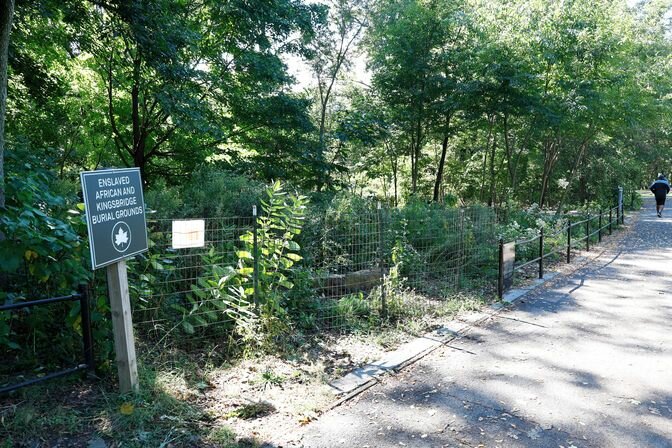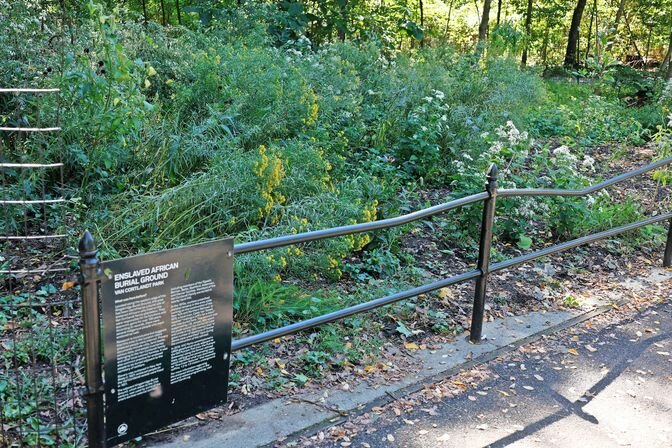Van Cortlandt Park Initiative secures $310K grant to honor Enslaved African Burial Ground
The Van Cortlandt Park Alliance has secured a $310,000 grant from the Mellon Foundation for a two-year initiative aimed at reimagining the half-acre Enslaved African Burial Ground deep inside Van Cortlandt Park.
This project seeks to enhance the visibility and understanding of this historic site.
Currently marked by only a few signs, the burial ground would be easy to overlook for those unaware of its presence. Formerly known as the Kingsbridge Burial Grounds, the site was renamed and consecrated in 2021.
A few years prior, the Kingsbridge Historical Society revealed in a New York Times article that extensive research indicated the burial ground was neither owned by the city nor part of the Van Cortlandt estate.
Ashley Hart Adams, the arts integration strategist for the Van Cortlandt Park Alliance, also manages the Enslaved People Project, which focuses on integrating the history of enslaved people into local educational curricula.
“There are so many areas of the park you can just walk through and you don’t know the history of where you’re standing.” Adams said.
While this is true for many parks around the city, including Washington Square Park and Bryant Park, the Van Cortlandt burial ground represents the largest concentration of enslaved people in the area. Though fewer in number than plantations in the South, the Van Cortlandts likely owned around 25 enslaved people at one point.
Often, this history is hidden in plain sight.
For example, Van Cortlandt Lake, recently renamed Hester and Piero’s Mill Pond, is not a natural lake but a site where Tibbett’s Brook was once dammed by enslaved African laborers. Piero, who was married to Hester, served as the miller and played a critical role in the plantation’s operation, using the pond as a source of energy to produce grain and lumber. The labor of enslaved people also contributed to the Van Cortlandt mansion and the nearby Old Albany Post Road.
To enhance knowledge of the burial ground, the Alliance will collaborate with a community engagement firm to kickstart the design concept competition that involving designers and community members. This effort hopes to create opportunities for vulnerability and reflection, incorporating elements such as theater arts, live music and dancing.
The first phase of the project, expected to commence next year, will focus on utilizing community concepts to inform actual designs, particularly from those descended from enslaved people.
John Semlak, a Riverdale resident and historical walking tour guide, was enthusiastic to hear about the grant.
“I just find it very good news that we’re going to do something,” he said.
Specializing in Civil War-era cemeteries, Semlak highlighted the disparities in how Black and white soldiers were treated after their deaths. He referenced the Evergreens Cemetery in Brooklyn, which has a section dedicated to a Black Union Army infantry unit, largely made up of recruits from New York. However, Semlak said, only a few gravestones from this unit are still visible.
Semlak pointed out that many Black cemeteries across the U.S., including those in New York, have not been preserved to the same standards as their white counterparts.
“These [majority white] graveyards are often made into tourist attractions”, he said.
Semlak believes this discrepancy reflects the values of both present and past societies: “Do we believe in equality not only during life, but after life?”









